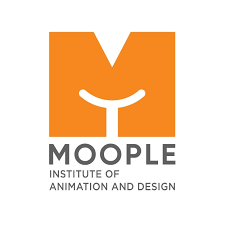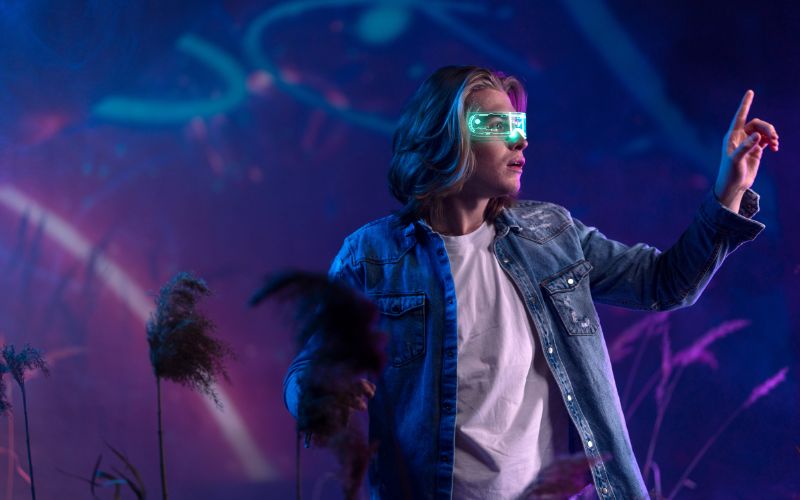Augmented reality (AR) is revolutionising businesses across the world, and animation is one of them. By mixing virtual items with reality, AR adds a new level of interaction, excitement, and engagement to animation. It provides animators, directors, and creators with unlimited possibilities to animate their works.
These innovative animation works were unimaginable earlier. This blog will consider AR’s impact on the animation industry and explain why aspiring animators should learn AR.
What is Augmented Reality?
Augmented reality is the technology that overlays digital content with images, videos, sounds, etc., on top of the real world. Unlike virtual reality (VR), which generates a completely immersive environment, AR engages with the real world surrounding you. It enhances what you see, hear, and touch.
AR also blends the virtual and real worlds in real time. You experience this through devices like smartphones, AR glasses, and tablets. Consider how Pokémon Go placed your reality with imaginary monsters. Imagine the IKEA app that lets you visualise your furniture inside your lounge even before you buy it. This is an AR function.
The Importance of Augmented Reality in the Animation Industry
Animation development is not changing every minute but is constant. There’s a wonderful place that AR enjoys in terms of its stake within the changing course. AR allows animators to create interactive, immersive experiences instead of just traditional 2D or 3D animations.
AR allows environments, effects, and characters to engage with real life in the here and now, adding a level of interaction never before possible. For instance, AR can place animated characters in real-world settings in an individual’s world and enable them to provide dynamic, interactive experiences to their audience. This is creating new frontiers in storytelling, education, entertainment, and promotion.
With the incorporation of AR into animation, animators can produce content that speaks directly to the viewer, providing them with interactive and immersive experiences. It may range from creating animated content for film and video games or producing interactive commercials or educational content. The possibilities are limitless. It’s a game-changer for creators. They must connect with their audience and provide experiences that will be remembered.
How AR is Revolutionising the Animation Industry
Let us find out how augmented reality, or AR, is transforming the animation industry in the following ways:
- Enhanced User Experience: AR makes it easier for users to interact with animated content on a personal level. Whether seeing a character materialise in their living room or controlling a 3D object with AR feels real and exciting. Such an interaction sets the bar for higher engagement, pushing the audience towards stronger connections.
- New Creative Opportunities: AR creates new opportunities for animators to break free from the constraints of classical animation. Animators can work with real-time environments, motion tracking, and spatial awareness. With AR, animated characters can move fluidly in real-world environments, and new opportunities emerge for interactive and innovative storytelling.
- Improved Visual Effects (VFX): AR technologies are revolutionising the VFX dynamics in animation. Together with AR and VFX, animators can design interactive universes where the visitors can observe animated characters or objects react to real-world surroundings in real-time. That provides a level of interaction that is interactive and keeps the viewer captivated while increasing the realism of the animation.
- Interactive Advertising: Several brands have begun incorporating AR in advertisements. Computer-generated objects or characters can manifest through a smartphone or tablet screen, giving room for users to interact with them. This emerging platform of marketing is revolutionising how businesses advertise, as it brings campaigns into more fun and engaging formats for audiences.
Indian Market Trend in Animation Industry with AR and VR
With a projected CAGR of 35.04% through 2030, the India animation market is anticipated to rise robustly from its 2024 valuation of USD 2.4 billion to USD 14.69 billion.
The growing consumption of digital material in a variety of industries, such as advertising, education, and entertainment, has propelled the animation market in India. Technological developments that make it possible to produce high-quality, captivating material, including advanced animation software and high-performance computers, support the market. The need for animated content has grown dramatically as a result of the emergence of streaming services and digital media, which is further reinforced by the rising appeal of animated TV shows, movies, and ads.
One important trend influencing the Indian animation market is the combination of augmented reality (AR) and virtual reality (VR) technology. One significant development impacting the Indian animation market is the growing popularity of streaming services. To accommodate a wide range of audience preferences, platforms like Netflix, Amazon Prime Video, and Disney+ Hotstar are commissioning and distributing animated material more frequently.
Why Study an Animation Course to Understand AR?
If you want to make the most of the AR revolution in animation, you must enrol in a full animation course. A complete animation course will give you the fundamental knowledge of animation principles as well as how to integrate new technologies like AR into your work. For instance, in a BSc in Animation, one can learn 2D animation, 3D modeling, and new AR technologies. These are the skills that are essential in making you industry-ready.
The courses generally include not only technical skills but also creative design thinking. In all the courses, you will learn how to use industry-standard software and get real-world experience using hands-on projects. You’ll be ready to solve real-world issues. The courses will generally take from 1 to 3 years, depending on how much expertise you wish to achieve. Regardless of whether you wish to learn conventional animation, 3D modeling, or the most up-to-date AR animation, these courses will equip you with expertise.
Why Choose Moople Academy for Learning Animation?
We at Moople Academy offer various coursework designed to teach students the basics of animation and some advanced AR techniques. Moople Academy’s course selection consists of the BSc in Animation, Animation Course, and 3D Modeling Course. These courses will help you learn the skills that the animation sector is in demand of.
We have designed the curriculum to provide a well-rounded understanding of animation techniques while paying attention to industry trends, such as AR and VR. The time to finish the course can vary from 1 to 3 years. So you can choose the right journey for your career goals. Our academy offers practical classes on industry-grade software. You can obtain the required skills to thrive in the competitive market today.
Conclusion
Adding augmented reality to animation is a thrilling area for both creatives and consumers. If you love animation and wish to work at the technological forefront, then learning AR is a must. Taking an animation course in kolkata will teach you everything you need to know and be able to do with AR and enable you to develop innovative, interactive experiences. Be with us today and be a part of the animated future!
FAQs
Q1. How does AR differ from VR in animation?
AR combines virtual content with physical environments, while VR builds a virtual world. Though both are used in animation, AR allows interaction with physical spaces.
Q2. How long will it take me to become an expert at using AR in animation?
It will usually take several months to a year, depending on how deep the course is and the amount of time you commit to studying and practising.
Q3. Is AR the future of animation?
Yes, AR is a fast-evolving technology that provides new, interactive opportunities for animators. It improves user experiences and provides new creative avenues for animation.
Q4. Can I begin learning AR without animation experience?
Yes, you can. However, possessing some basic knowledge of animation principles and software will make you learn AR techniques better. A good course will instruct you from the basics to advanced AR techniques.

